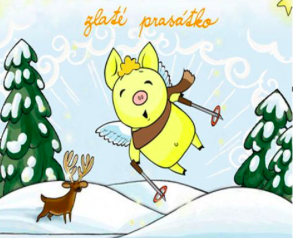Hello Kids!
When I am in the Czech Republic, I teach kids who are just like you! These kids speak a different language, but they love to play, pretend, and have fun. This page is just for you to learn more about what kids in Czech like to do. Grab a sibling or friend and learn about Czech culture and play lots of fun games!
Lesson 1: Little Mole
Little Mole is a favorite Czech cartoon character. All the kids love Little Mole. He is similar to an Elmo or Mickey Mouse character to you. Little Mole lives in the forest with all his woodland friends, but he is also friends with farm animals. When you read a storybook in Czech, you will notice that the animals make different sounds than what you are familiar with in your storybooks! When people speak a different language, the way they describe the animal sounds is sometimes different too.

GAME TIME!
Look at the picture of Little Mole and his farm animal friends. Read the animal sound and find that animal on the picture. Does this animal sounds similar or different to what you say?
Cow: boo
Dog: huff
Cat: meow
Duck: gaga
Rooster: kykyryky
Goat: maa
Sheep: baa
Horse: heehaw
Pig: croak
Frog: qvack
Rabbit: meets-meets
Lesson 2: Fairy Emily
Czech children have another favorite cartoon character who also lives in the forest. This character is Fairy Emily. Fairy Emily has an important job in the forest. She protects the animals from the hunter and looks after the smallest bugs and littlest acorns. In the spring, she dances and sings throughout the forest to wake up the flowers that have been sleeping all winter. She helps spread their seeds as she blows on the flowers and keeps them away from weeds. In one story, a very angry weed, called Stinging Nettle, hurts Fairy Emily. When you touch this plant, it makes your skin sting. Fairy Emily cried and cried because the weed hurt her. All her crying made a river through the forest. When Fairy Emily felt better, she used the river to carry seeds to another part of the forest. She reminds children that good things can come from things that hurt and that every little part of nature is important.

GAME TIME!
Work a s a team to collect flowers for Fairy Emily's headband! Roll a dice and keep track of how many flowers you collect. Watch out! The hunter and Stinging Nettle move you backwards on the board, but, like Fairy Emily teaches us, this isn't always a bad thing because now you have a chance to collect more flowers! See if you can beat your previous score.
Lesson 3: Little Evening
The cartoons of Little Mole and Fairy Emily are shown on a TV program called Little Evening. This program has been on Czech television every night for over 40 years! The show only lasts for a few minutes. At the beginning of the program, Little Evening greets the viewers and announces the program. He passes out invitations to watch the short cartoon bedtime story as he rides a rocking horse, car, and unicycle. In the country of Slovakia, which is next to Czech, they also have a TV program that shows a bedtime cartoon each evening. In Slovakia is isn't Little Evening, but Grandpa Evening! Grandpa Evening comes and "lights the stars" for the evening and the children watch a short cartoon story. When the story finishes, Grandpa Evening finishes lighting the stars, and that means, it is time for bed.

GAME TIME!
Watch the short clips of Little Evening and Grandpa Evening below. What is similar and different between Little Evening and Grandpa Evening? What is your favorite bedtime story?
Czech Television (43 seconds)
Slovak Television (1:15 minutes)
Lesson 4: Bob and Bobby
Another cartoon story that Little Evening shares is called "Bob and Bobby." Bob and Bobby are two rabbits who like in a magician's hat. In the hat, the rabbits can travel anywhere because the hat flies through the sky and floats on the water. Bob and Bobby are best friends, but they are opposites. Bob is bigger and practical. He also likes to exercise in the morning. Bobby is smaller, imaginative, and lazy in the morning. However, both rabbits can get into mischief quickly, and this creates the plots for the stories.
GAME TIME!
Choose one person to be the leader, Bob. The other person is Bobby. When Bob does something, Bobby will do the opposite. If Bob raises his left foot, Bobby can lift up his right. If Bob stands up, Bobby lays down. Watch the short video clip with Bob and Bobby to see how they are opposites.
Bob and Bobby Wake Up (English Subtitled. 25 seconds)
Lesson 5: The Little Donut
Czech children like the cartoon stories on Little Evening's program, and they also have fairytales. They know some fairytales that you know, like Little Red Riding Hood and The Three Little Pigs. They also know the fairytale about The Gingerbread Man, but in Czech, the story is a little different. Instead of a gingerbread cookie, the Czech version has a little donut. This donut doesn't run away, but he rolls away! When the kids act out the story of The Little Donut, they do summersaults to show him rolling away! In the Czech version, he rolls through the forest, where as in the American version, the gingerbread man runs away from the farm. When the Little Donut rolls away he says the rhyme, "I'm a little donut, fried in butter and cooled on the windowsill. I rolled away from the old woman, the rabbit, the wolf, and the bear too!"
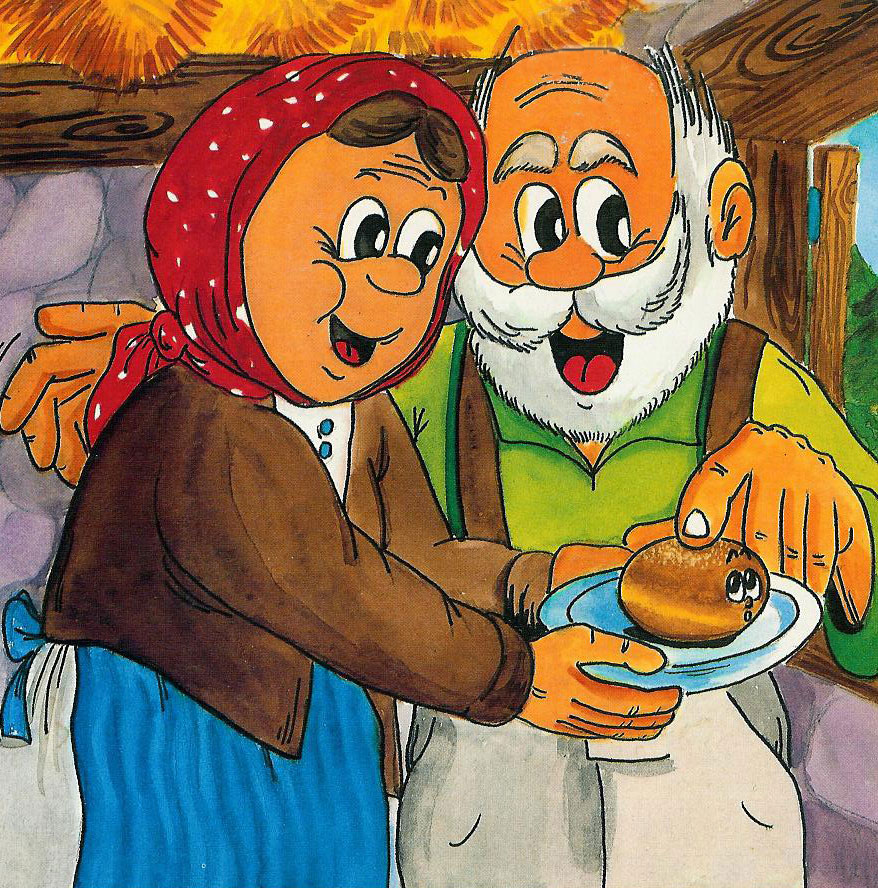
GAME TIME!
Color the story of The Little Donut and cut apart the different squares. Try to remember the sequence of the story and put the story back in order from start to finish.

Lesson 6: Mushroom Hunting
Many Czech children like the stories of Little Mole and Fairy Emily because they also like to spend time in the forest. Czech kids will go to the forest with their parents in the summer to look for wild blueberries and mushrooms to eat. In the summer, it is very hot outside, but in the deep forest, it is shady and cool. Even on the hottest days in the summer, kids need to remember to bring a jacket to the forest. The kids learn which mushrooms are good to eat and which ones to leave alone. Some types of mushrooms can make people sick if we eat them. The kids also learn where to find the mushrooms. They are usually in damp, shady places in the forest, and where you find one, usually another is close by!
GAME TIME!Choose one person to hide five small objects (like erasers or pom-poms). These will be your mushrooms. The other person will go out of the room while the first is hiding the mushrooms. Try to find all 5 mushrooms, and remember, they are usually close together and in shady places.
Lesson 7: Wild Boars
Hiking in the forest is a regular activity for many Czech children, but they are warned not to go too far into the forest alone. A child can easily get lost, and there are animals who live in the forest that can be dangerous if they are bothered. Wild boars live in many Czech forests. They are quick animals and can be very protect of their babies in the spring. If they see that a person is getting too close to their babies, they will charge at the person. These wild boars can be quite big. Some of them bigger than you! A normal adult boar is usually between 3-4 feet tall. Czech children are taught be be still and quiet if they see a wild boar in the forest. If the boar begins to run at you, the children are told they must quickly climb a tree and wait until it is safe to come down.
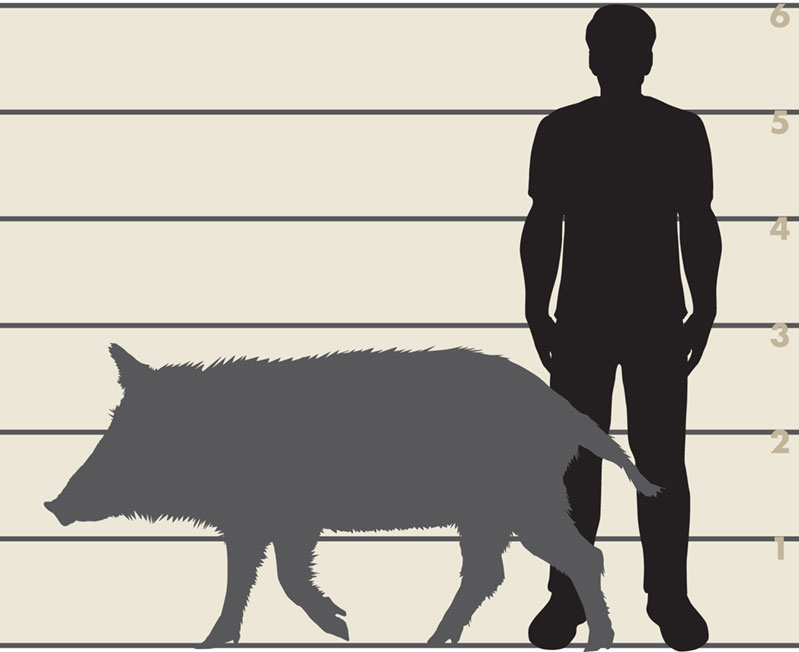
GAME TIME!
Choose one person to be the wild boar. This person will stand on one side of the room with their back turned to the others. The others are trying to get across the room (their forest) without the wild boar hearing them. If the wild boar hears the other players, he/she turns around and chases them back to the starting line. If the wild boar tags you, switch places!
Lesson 8: Krakonos
Krakonos is the keeper of the Czech mountains. He is a fairytale character in Czech stories. Krakonos has a similar job to Fairy Emily's. He keeps the mountain animals safe from the hunters and also protects treasure from being discovered on the mountain so that people don't become greedy and destroy the mountain. When a greedy person come the the mountain, Krakonos sends a lot of fog to confuse the treasure seekers so that they will leave the mountain alone. When the kids see there is a lot of fog outside, they guess that Krakonos is really angry and made so much fog that it came all the way from the mountains!
GAME TIME!
When Krakonos sends the fog, it can be very hard to see. Choose one person to be blindfolded and another to guide them by listening to their voice. Create an obstacle course, like weaving around chairs, to make the game more difficult.
Lesson 9: Vodnik
Vodnik is another character in many Czech fairytales, like Krakonos. Vodnik resembles a frog with webbed feet and hands and green skin, but he has the body and face of a perosn. Vodnik lives in the ponds and streams. He especially likes to live near a watermill. Vodnik is an interesting character in fairytales because he can be good or bad. Sometimes Vodnik might pull someone into the water, and other times, he might tell a fisherman where to find the best place to fish. Vodnik can help someone who falls into the water get back to land, but sometimes he is bad and doesn't help. Vodnik likes to collect ceramic mugs. They are his treasures. Many parents will tell their children stories of Vodnik so that they will remember to be careful when playing by ponds and streams. It is also traditional for Czechs to decorate their fences with old ceramic mugs, but some people like to imagine it is Vodnik nearby displaying his treasures.


GAME TIME!
1. Choose one person to be Good Vodnik and one person to be Bad Vodnik. If Bad Vodnik tags you, you are frozen until Good Vodnik unfreezes you. If you play in the summer, use water guns to "tag" the players!
2. Ask mom or dad to help you find an old mug at your house to display outside like Vodnik. Maybe you don't have a fence to put the mug on, but maybe you could plant a little flower in the old mug.
Lesson 10: Garden Gnomes
Many traditional Czech homes have the ceramic mugs decorating their fences, and many times you will will also be able to see a little gnome statue in their garden. Besides being decorative, these little gnomes have another job. Czech parents tell their children that in the night, while everyone is sleeping, the gnomes wake up and come into the home to take food and play with the children's toys. When the child wakes up in the morning and cannot find a certain toy or a favorite treat, it is the gnome to blame! The little gnome always returns to the same spot in the garden before everyone wakes up, but he doesn't always return the toys and snacks. The kids need to search if they will find it again or if the gnome got away with his sneaky tricks!
GAME TIME!
Choose one person to be the gnome. While everyone in the room is "sleeping," the gnome will change one thing in the room by moving it to a different place. Then, wake up the rest of the players and have them search for which item was moved by the gnome. You can also play it where the gnome will take an object visible in the room and put it under a box in the center of the room. Then, the players should guess what the gnome has hidden in the box.
Lesson 11: Sleeping Knights
Sometimes, we hear stories like Krakonos and Vodnik that are fairytales, and other stories we call legends. Legends are stories that maybe have some true part, but because the story has been told so many times, the story gets mixed up. It is like when you play "Telephone" with your friends and whisper a sentence that gets passed between 10 people. Suddenly, the sentence sounds quite different by the time it reaches the end. There is one legend in Czech about the sleeping knights. It is similar to the sleeping gnomes, but these knights have been asleep for much, much longer. This legend says that if Czech is ever under attack, these sleeping knights will come to life and go to Prague to help Saint Wenceslaus fight the attackers. The one problem is that the sleeping knights are carved in a cave a 2 day walk away from Prague! Hopefully the knights can wake up and run fast.

GAME TIME!
Ask your mom or dad to be Saint Wenceslaus. They will be on the opposite side of the house. When you hear them call you, the knight, run as fast as you can to help them! Maybe you will need to go up the stairs or around the table. Have mom/dad set a stopwatch to see how fast you come. You might need to wait for a while on the other side of the house because it needs to be a surprise when Saint Wenceslaus calls his knights.
Lesson 12: The Good King
In the last lesson, we talked about Saint Wenceslaus. He is an important man, especially in Czech history. There is even a Christmas carol written about him called "Good King Wenceslaus," but Wenceslaus was never a king. He was a duke! The Czech people like Wenceslaus so much that they call him a saint. He was a very kind leader and cared a lot for the poor people. The Christmas carol is about a winter night when Wenceslaus saw a boy carrying wood in the cold snow. Saint Wenceslas cared for the people and went out of his big house to help the little boy carry the wood. On the way, the boy's feet became very cold, so Saint Wenceslaus told the boy to step in his footprints in the snow so his feet will stay dry and warm.

GAME TIME!
Play Follow the Leader. Choose one person to be Saint Wenceslaus. Everyone following this person needs to step in exactly the same spot as the leader!
Lesson 13: Letovice Legend
There is another interesting Czech legend about another duke. This duke lived in the city Boskovice with his wife, the duchess. Boskovice translates as "barefoot," so it is said that people walked around the city without any shoes. One day, the duchess stubbed her toe and it hurt so much that she complained to the duke that she didn't want to live in Boskovice anymore. The duke asked her where she wanted to live. The duchess replied that she wanted to live in a place that was always summer. The city next to Boskovice is called Letovice. Letovice translates to "more summer." So, the duke built a palace for the duchess in the city of Letovice. Letovice is really close to Boskovice, but there are many hills around the city and even a lake on one side. Even when there is bad weather in Boskovice, the weather in Letovice is sometimes much more like summer!
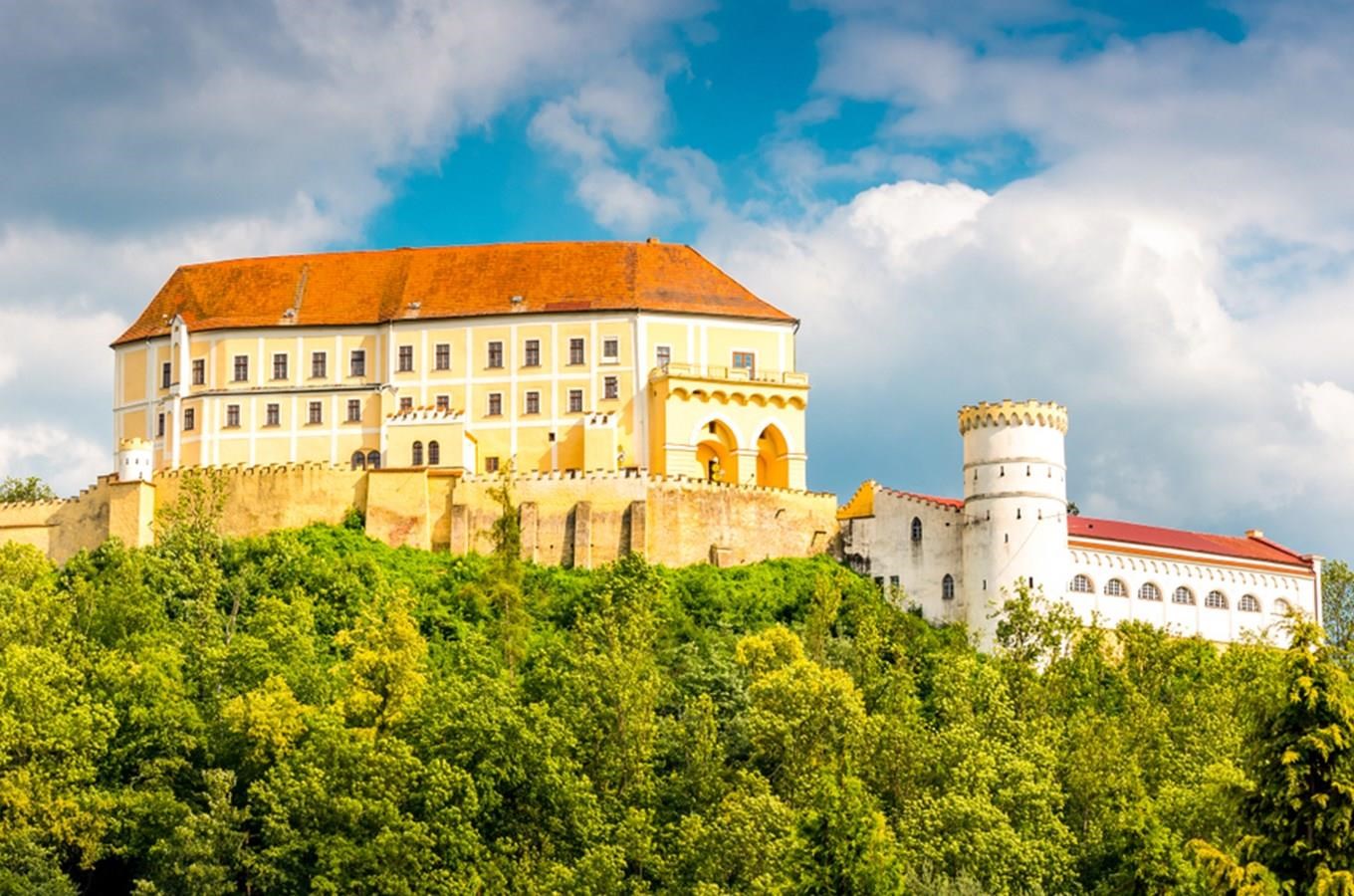
GAME TIME!
Walk barefoot around your house and think about how the different floors feel on your feet. The carpet is soft and warm. The tile is cool and slippery! How else does it feel? Ask mom or dad if you can walk outside without your shoes on the grass and sidewalk. What does that feel like?
Lesson 14: Lazinov Lake
The lake near Letovice is not a natural lake. It was created by people. About 50 years ago, the lake was a valley with a river running through it. It was decided to build a dam on one side of the valley to make the reservoir (this is the name for a man-made lake). They decided this because in the spring this river would flood further down and it was difficult in the other cities. There was just one problem. The valley wasn't empty. There used to be a village in the valley called Lazinov. There were many houses, a store, small fire station, and even a little chapel! Most of the homes had to be destroyed and the people needed to move because their homes would be underwater. Sometimes, people still find things that wash up on the shore of the lake that someone left in the village.
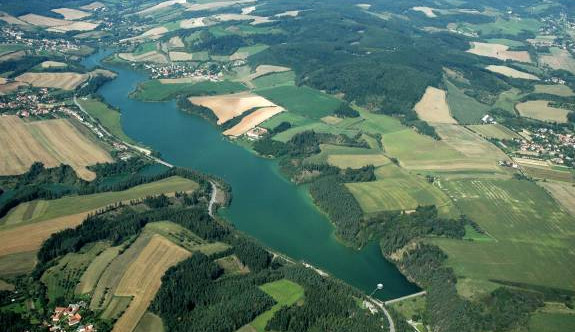
GAME TIME!
Imagine your home is underwater and you are a fish swimming through the different rooms of your house. How would your home look different? Would something be floating by the ceiling?
Lesson 15: Prague Castle
Czech has many palaces and castles. There is one in almost every city. Sometimes there are both a palace and a castle in the same city! Prague castle is the largest castle in all of Europe. There are many courtyards within the castle and in the middle of the biggest courtyard is a full-size cathedral!

GAME TIME!
1. Play I Spy. While looking at this picture of the castle, can you find the cathedral in the courtyard? How about a bridge over a forest moat? Can you find what might be a wishing well? The entrance gate? Which building do you think is the garden house?
2. Print out the coloring sheet of the castle and enjoy coloring!
Lesson 16: Coat of Arms
Almost every city in Czech has a "Coat of Arms." This is a special symbol or pattern that is painted on shields. It was used by knights to show where they are from so they could easily recognize their warriors from the enemy in a battle. The Coat of Arms would represent the area they were from or their king. It was often a symbol that reminded them of their home and who they were fighting for. Now, there are no more wars between the cities like there once was, but the Czechs still use the Coat of Arms to represent the city on signs or flags.

GAME TIME!
Create your own Coat of Arms shield. Think about what is important to you. Use your favorite color. Draw what represents you; then, share it with your family and explain what you drew on your shield. Try this activity with your family all together. Think about what represents your family.
Lesson 17: Saint Nicholas Day
Holidays are a great time to learn new traditions in a culture. We already talked about the famous Christmas carol about Good "King" Wenceslaus. That Christmas carol is a part of Christmas in other cultures too. Sometimes traditions are same over many cultures, and sometimes the traditions are specific to the culture. In Czech, and many parts of Europe, they celebrate Saint Nicholas Day. On the evening before Saint Nicholas Day (celebrated traditionally on December 6th), three people go into the city dressed up as Saint Nicholas, a good angel, and a fallen (bad) angel. The children come the the center of the city and sing Saint Nicholas a song or recite a poem. The fallen angel tells Saint Nicholas that the child was bad during the year, and he will take him away in his sack or just give him coal and potatoes. That's when the good angel steps in. The good angel explains that the child is really good and only sometimes makes mistakes. With many promises to be even better the next year, Saint Nicholas gives the child a treat. It is a great reminder of the true meaning of Christmas about the gift and second chance we have all been given through Jesus.
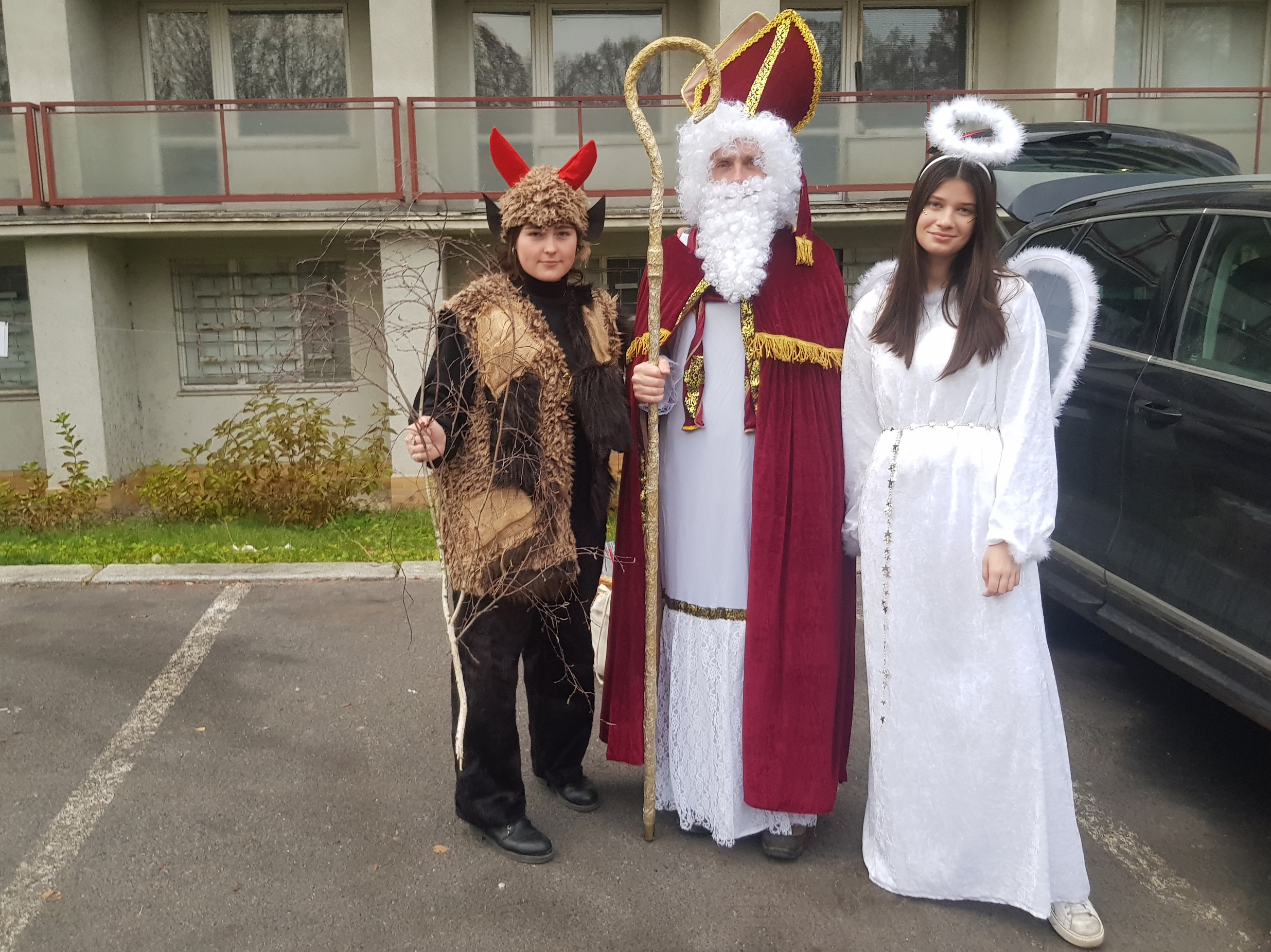
GAME TIME!
Play this game with four people. Write the three Saint Nicholas characters on three different cards. Have three players each choose a card and not show or tell anyone. The fourth person will ask a question to the characters and then decided who is who based on their answer.
Example:
Spokesperson asks, "How was your day?"
Nicholas: "Maybe good, maybe bad. I'll wait to decide."
Good Angel: "Every day is amazing!"
Fallen Angel: "It was a completely horrible day."
Try more questions like, "What hobby do you like?", "What is your favorite color?", "Where do you like to travel?"
Lesson 18: Christmas Meal
Holidays are a good time to eat lots of different food. In many cultures, the traditional food for holidays may be different than what is normal for you. In Czech culture, it is traditional to eat carp for Christmas. Carp is a kind of fish that lives at the bottom of lakes. Before they eat the carp on Christmas day (which in Czech is celebrated on December 24th), many families keep the live carp in their bathtub! During Christmas week, the family buys the carp from a market and then brings it home to their bathtub. It would be like if you kept a turkey at your house before Thanksgiving!
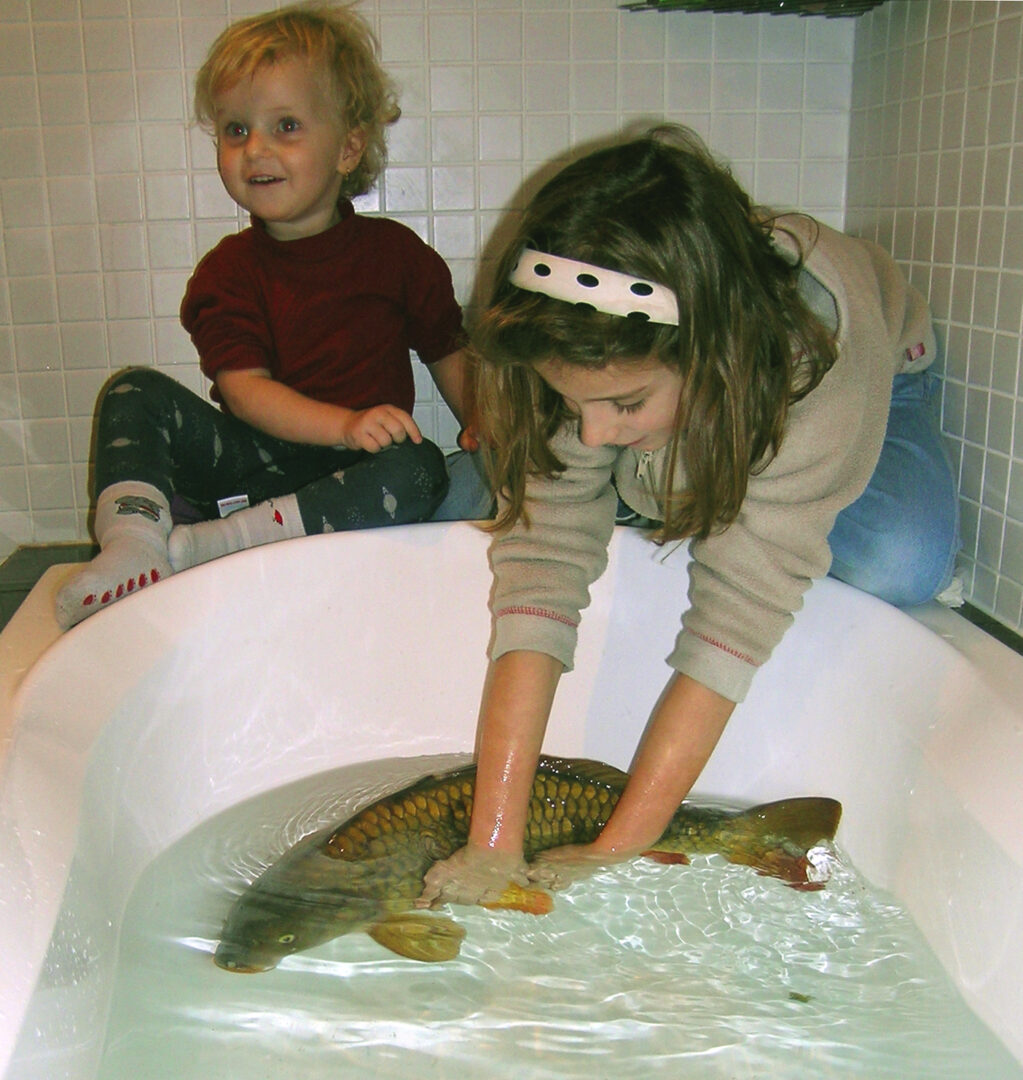
GAME TIME!
Make a menu with what you normally eat on Christmas Day. Add to your menu some foods that you don't usually have, but that you might want to try this year.
Lesson 19: Golden Pig
The Christmas Carp meal is usually a very important dinner not only because it is the traditional meal, but also because for many Czechs, it is the first meal they have in the day. Czech culture has a tradition that if the person doesn't eat all day before sunset on Christmas, they will see a flying golden pig in the evening! It is lucky to see the golden pig, so many people try to last all day without eating on Christmas. This tends to be very difficult because there are always so many sweets and cookies out for the Christmas celebration. Remember in Lesson 7 when we learned about the Wild Boars? There is a famous Czech commercial for a soda called Kofola. In the commercial, the child and her father go into the forest on Christmas day to cut down a Christmas tree. (This is also very traditional to get and decorate the tree on Christmas day.) The father explains to the child that she must wait to see the golden pig, but the child thinks she has already seen the pig. When the father turns around, he realizes they have met a wild boar in the forest, not the golden pig!
Watch the short commercial (47 seconds) with English subtitles
GAME TIME!
Blow up a gold or yellow balloon and draw a pig's face on the balloon with a marker. (If you don't have a yellow balloon, use any color.) Try to keep the flying golden pig in the air for as long as you can!
Lesson 20: Three Kings Day
Shortly after Christmas, the Czechs celebrate another holiday. This holiday is called Three Kings Day. It is celebrated on January 6th. It is celebrated to represent the Three Kings searching for Baby Jesus after his birth. Children in the village make groups of three and walk around the village together. They knock on the doors and sing a song about searching for baby Jesus. The people at the home tell the kings that Jesus isn't at the house and they should look further down the street, but before the Three Kings go, the people give the children a small donation to bring to the church. The children who are playing the Three Kings will then use chalk to write their initials as a blessing on the doorpost of the family's door. When you walk around the village, you will see this blessing on the doors and know that kind people live there who helped the kings.
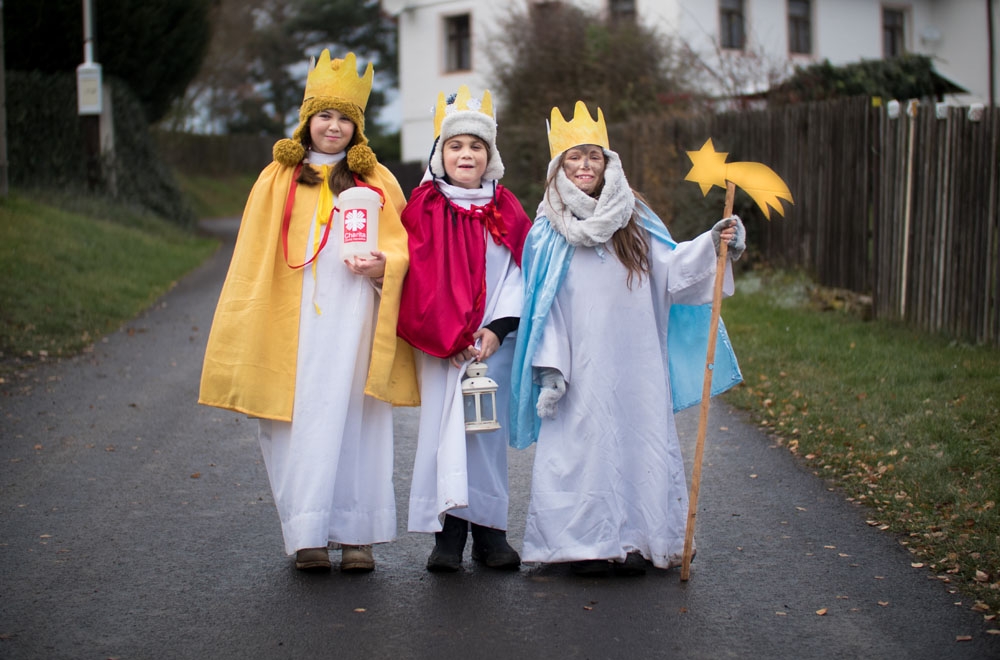
GAME TIME!
Print out the picture of the door and write your initials on the door (the letters that start your first, middle, and last name). Think of kind words to write on the door that would be a blessing for your home, like love, happiness, joy, or hope.
Lesson 21: Lucky Chimney Sweep
In different cultures, people view different things as "lucky." You might be familiar that people think finding a penny is lucky, or a four-leaf clover, even a horseshoe is seen as lucky. We've already learned that in Czech culture, seeing a golden pig on Christmas is lucky. There is another lucky symbol in many countries in Europe, including the Czech Republic. They say if you see a Chimney Sweep, it is lucky. A Chimney Sweep is a man who cleans out the chimney. He is usually wearing black and has a long brush to sweep out the inside of the chimney so that it will work well. The Chimney Sweep cannot be afraid of heights because he must go to the roof of the house!

GAME TIME!
Pretend you are a Chimney Sweep. You cannot touch the ground, but need to move over the "rooftops." Try to move from sofas to chairs in your living room without touching the ground. Put some pillows on the floor to create more "rooftops."
Lesson 22: Czech Clothing
Just like many cultures have different holidays, many cultures have traditional clothes that represent their country. Czech traditional clothing is often bright patterns in red and blue and green on black. The pattern is often very detailed flowers, vines, and hearts. Even though the Czech children don't wear these traditional outfits anymore, sometimes their clothes still have these classic patterns.

GAME TIME!
1. Print out the paper dolls and their outfits to dress them in traditional clothing. The dresses are traditional Czechoslovakian and Polish outfits. Czech used to be connected with the country Slovakia, and Poland is another country very close to Czech and Slovakia, so they also have similar clothing. It is like when you, your siblings, and cousins all pass down and share clothes!
2. Print out the picture of the Czech girl in the traditional outfit, but her dress is very plain. You will need to add some flowers, vines, and hearts to make it look like a traditional Czech outfit.
Lesson 23: Nicknames
Many people also have a nickname. (Some people have many nicknames!) In Czech culture, it is very normal to give children nicknames. It is like when we call someone named Grace, Gracie or Robert, Bobby. To give a nickname in Czech, usually we add an ending to the name. For a girl, you can add -uška, -inka, or -ička. For a boy, you can add -ik, -ek, or -iček. This letter š makes the sh sound, and this letter č makes a ch sound. Usually, the Czechs take the first syllable of the name and then add the ending. If a girl has the name Anna, we can call her, Anuška, Aninka, or Anička (it is like calling her Annie). A boy named Thomas can be called Tomik, Tomek, or Tomiček (it is like calling him Tommy).
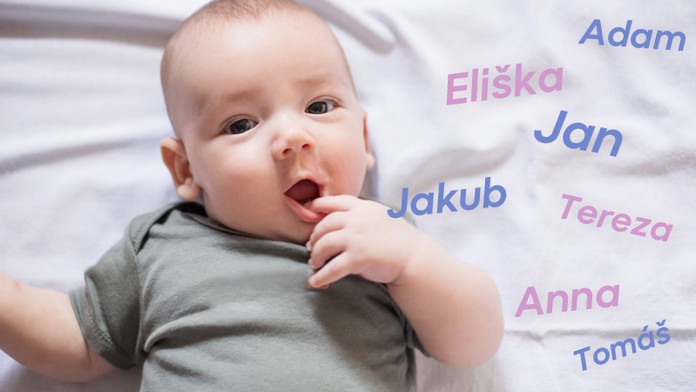
GAME TIME!
Try to make a Czech nickname for yourself by using the name endings. Take the first syllable of your name and add one of the endings.
Examples:
Name - Sophia. First syllable - Soph. Nicknames - Sophuška, Sophinka, Sophička.
Name - Oliver. First syllable - Ol. Nicknames Olik, Olek, Oliček.
Lesson 24: Name Day
Another important part of a culture are names. Your name is the first gift your parents gave you, and in Czech culture, names are celebrated! On Czech calendars, there is a name on each day of the year. That is called a "Name Day." A Name Day is like a mini-birthday. Many children receive some chocolates or a special dinner. It is a day to celebrate you, and everyone else who is also named the same as you! Long ago in Czech culture, parents often named their child by the day they were born. Each day, there is a boy or a girl option. This especially helped if the parents didn't know what to name their child. It is easy to remember someone's Name Day because it is written on all calendars and even announced on the radio!
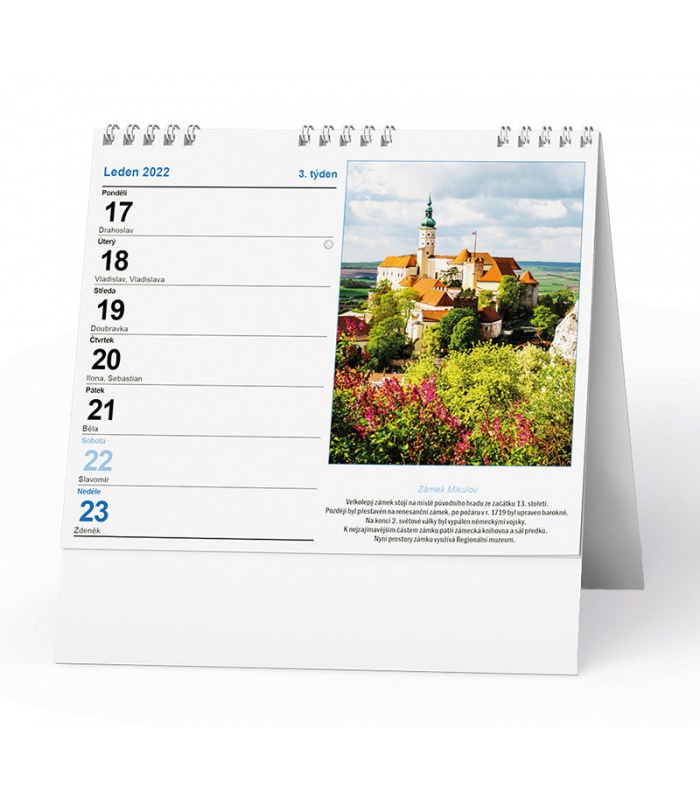
GAME TIME!
Choose a day to be your name day. It can be your half-birthday, for example. Write it on the calendar and on that day, ask your mom and dad why they chose your name when you were born. Your name has meaning. Ask mom or dad to help you research your name to find out what it means.







